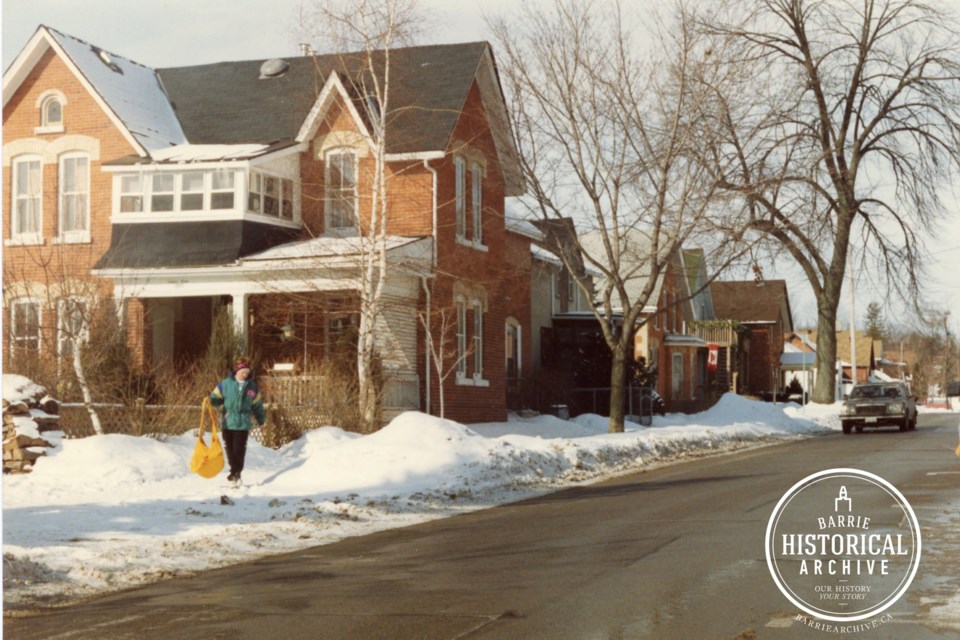This ongoing series from Barrie Historical Archive curator Deb Exel shows old photos from the collection and one from the present day, as well as the story behind them.
80 Owen St.
Any home more than 100 years old is sure to have had a few occupants. The property located at 80 Owen St., in downtown Barrie, is no exception.
As an early owner about 1874, George Henry Brown may even have been the builder of this gracious home on one of the city's oldest streets. Brown was among a number of local craftsmen who were also designing buildings as ‘architects’.
A mason and plasterer by trade, Brown had many landmark Barrie buildings to his credit, notably the Baptist Church at Worsley and Clapperton streets, Bernard Hinds ‘Wildcat’ store at 10 Dunlop St. E., and the magnificent ‘Oaks’, more commonly known as Lount’s Castle, at 25 Valley Dr.
Brown also collaborated with builder George Ball on the remodelling of the market building (town hall) in 1877, now demolished.
Coincidentally, the house at 80 Owen is across from architect Thomas Kennedy’s captivating Lilac Villa.
Around 1885, the property belonged to Robert Esten Fletcher, a native of Belfast, Ireland. Fletcher, a builder, was contracted about 1891 to construct one of Allandale’s most interesting buildings: St. George’s Anglican Church.
If Fletcher actually lived in the Owen Street home, the family may well have outgrown it as he and wife Jane had seven children.
By the late 1890s, R.E. Fletcher was living in an impressive home at 63 High St., which later became the 13-bed Barrie General Hospital in 1897.
Fletcher and his family moved into Maj. Joseph’s Rogers former home Roselawn, at nearby 9 Bradford St.
In 1915, the Owen Street home was owned by Martha Parkhouse.
Martha’s husband, Ezra, belonged to one of Minesing’s pioneer families. It’s unknown exactly when the Parkhouse clan arrived in the area, but Henry and Elizabeth’s daughter, Eliza Jane, was the first settler baby to be born in the village. Not that there were no other children or babies, just that those mothers left the bush when it was time to give birth.
On Feb. 1, 1865, Henry B. Parkhouse purchased 100 acres near Minesing for 156 pounds, five shillings from the Canada Company. The Parkhouses were hard-working farmers, considered to have one of the best farms and the best grain. They were kind people, helpful to neighbours and new homesteaders alike.
Ezra Parkhouse married Martha Eveline Partridge on June 1, 1892. Ezra operated a steam-powered saw mill with water piped from a nearby stream and stored in a cistern until needed. A heavily forested area, some of the logs were so heavy that it required two teams of horses to pull the skids to the mill.
Eventually tracks were built across the road so cable cars could be used to pile lumber on both sides of the road. Teams of horses would deliver the lumber to its destination.
Tragically, Ezra died suddenly when only 38 years. His mill would remain in operation until 1913.
His widow Martha and her children would move to the house at 80 Owen St.
In the years following, several families would call this lovely century dwelling home. It’s actually two homes. The back section of the house, which may have been part of or an addition to the original structure, has its own address: 82 Owen St.



